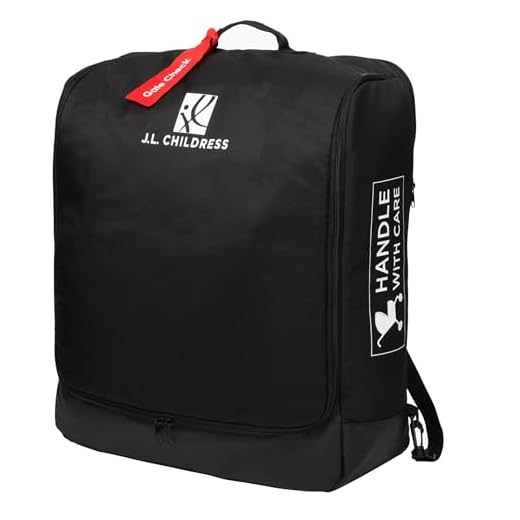

The standard weight limit for checked items typically ranges from 50 to 70 pounds (23 to 32 kilograms) depending on the airline. For personal items or carry-ons, dimensions are generally capped at 22 x 14 x 9 inches (56 x 36 x 23 cm), which encompasses bags such as backpacks or small suitcases.
Business and first-class passengers often enjoy increased allowances, frequently permitting an extra piece of checked baggage or greater weight thresholds. Always verify with your specific airline for the most accurate details regarding baggage policies, as these can vary widely.
Excess fees can be a significant concern if your belongings exceed the specified limits. Charges for overweight or oversized items may reach as high as $200 or more, depending on the airline’s guidelines. Consider weighing your bags beforehand to avoid unexpected costs at the airport.
Weight and Number Restrictions for Air Travel
Typically, airlines permit one carry-on item weighing up to 10 kg and measuring no more than 55 x 40 x 20 cm. Additionally, a personal item such as a handbag or laptop bag, commonly weighing around 2-5 kg, is also permissible. Ensure compliance with these dimensions to avoid complications at check-in.
Checked bags generally have a limit of 20-30 kg, depending on the carrier. Standard dimensions are often 158 cm in total (length + width + height). Check your specific airline guidelines, as variations exist and can affect your travel experience.
Excess Charges and Guidelines
If exceeding the specified limits, expect fees ranging from $50 to $200 per additional or overweight item. It’s advisable to pre-purchase extra weight allowances if possible, as this can reduce costs significantly compared to paying at the airport.
Packing Tips
Prioritize essentials and consider wearing bulkier items during the flight. Rolling clothes tightly can save space, while packing cubes assist in organizing. Review item restrictions thoroughly to avoid carrying prohibited articles, ensuring a smooth checkpoint process.
Standard Baggage Allowance Per Airline
The typical weight limit varies significantly among carriers. Here is a breakdown of standard policies from major airlines:
| Airline | Carry-On Weight (kg) | Checked Bag Weight (kg) |
|---|---|---|
| American Airlines | 7 | 23 |
| Delta Airlines | 7 | 23 |
| United Airlines | 7 | 23 |
| British Airways | 23 | 23 |
| Ryanair | 10 | 20 |
| EasyJet | 15 | 23 |
| Lufthansa | 8 | 23 |
| Qatar Airways | 7 | 30 |
Always confirm the latest regulations directly with the airline prior to your trip to avoid surprises. A best drawstring gym bag can often fit within carry-on limits, benefiting those traveling light.
Understanding Carry-On Restrictions
Passengers generally can bring a small bag that fits in the overhead bin or under the seat in front. Dimensions often max out around 22 x 14 x 9 inches, including handles and wheels. Always check with the airline, as variations exist.
Key factors to consider include:
- Weight Limit: Some carriers impose weight restrictions, commonly ranging between 15 to 25 pounds.
- Personal Items: In addition to the primary piece, a personal item like a purse, laptop bag, or diaper bag is usually accepted.
- Prohibited Items: Certain items must remain outside carry-ons, including sharp objects, flammable materials, and oversized liquids.
Ensure your belongings comply with TSA regulations regarding liquids to avoid delays at security checkpoints. Containers should not exceed 3.4 ounces (100 ml), and all must fit in a single quart-sized bag.
For travelers seeking convenience, utilizing a compact solution like the best backpack baby carrier can be optimal. That approach allows hands-free mobility while adhering to airline dimensions.
Staying informed about specific regulations can prevent mishaps and enhance your travel experience. Always confirm with your airline before departure for the latest rules pertaining to carry-on items.
Excess Baggage Fees and Policies
Charges for additional weight or items can significantly impact travel budgets. Each airline maintains distinct fees, often based on weight or dimension exceeding the standard. For example, a fee may range from $50 to $200, depending on the carrier, destination, and the amount of excess weight.
Policies may vary dramatically. Certain airlines allow pre-purchase of excess weight at a discounted rate prior to arrival at the airport. Others may impose higher fees if paid at the check-in counter. It’s advisable to check individual airline websites for their specific regulations to avoid unexpected costs upon arrival.
Common Strategies for Managing Fees
To mitigate costs, travelers should consider several tactics. Packing strategically, choosing lightweight options, and utilizing carry-on capabilities can minimize the need for extra weight. Sharing items with travel companions also provides flexibility in managing limits. In cases of unavoidable extra weight, purchasing an additional checked bag often proves cheaper than paying excess fees.
Frequent Flyer Programs and Bonuses
Loyalty program memberships can yield benefits such as increased baggage allocation or reduced fees. Many airlines offer enhanced allowances to elite members, which can help in managing volume and weight effectively. Joining such programs could result in considerable savings over time for those who travel often.
Special Equipment Considerations
Most airlines permit sports gear as part of your baggage. Here’s a streamlined overview of key points:
- Size Restrictions: Specific dimensions apply to various items such as bicycles, skis, and surfboards. Consult your airline for exact measurements.
- Weight Limits: Sports equipment often has different weight allowances. Ensure that your items fit within these limits to avoid extra fees.
- Packaging Requirements: Proper packing is essential. Many airlines require items to be in appropriate cases or bags to prevent damage during handling.
- Notification: Inform your carrier in advance if traveling with specialized gear, as some may require additional arrangements.
- Fees: Additional charges may apply for oversized or overweight items. Check the airline’s policy for specifics on fees related to athletic equipment.
Always verify the details with your airline prior to the trip to ensure a smooth experience. Proper planning can prevent surprises and ensure your sporting goods arrive safely at your destination.
Traveling with Children: Luggage Rules
Families traveling with kids should prioritize efficient packing to accommodate essential items. Most airlines provide specific guidelines for young passengers, often allowing additional carry-ons or checked items, such as strollers or car seats, without extra fees.
Infants typically can travel with a diaper bag, which is excluded from standard size limitations. Ensure to verify each airline’s policy regarding baby gear, as regulations may differ significantly. Some companies permit one checked bag specifically for baby items, ensuring you have everything needed for a comfortable journey.
For kids over two years, their belongings usually count towards standard baggage limits. However, many airlines grant leeway for families; inquire directly with your carrier to clarify what is permissible.
Staying informed about these policies streamlines the packing process and minimizes stress at the airport. While preparing for the trip, plan activities to engage children, such as visiting the best aquarium in europe, to keep them entertained before boarding.







